How to fix Panasonic Handsets headset that doesn't work?
- JJessica WilliamsonAug 31, 2025
If the headset on your Panasonic handset isn't working, make sure the headset tone setting is set to "On". Also, ensure the headset jack is connected properly.
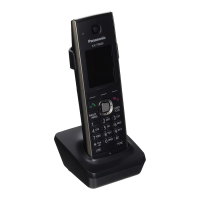











How to fix Panasonic Handsets headset that doesn't work?
If the headset on your Panasonic handset isn't working, make sure the headset tone setting is set to "On". Also, ensure the headset jack is connected properly.
Why does my Panasonic Handsets say "No Service"?
If your Panasonic handset displays "No Service" and you hear beep tones, it could be that the handset is out of range. Try moving closer to the base unit or try again later.
Why I can't dial on my Panasonic Handsets?
If you cannot dial on your Panasonic handset, key lock mode might be on. To cancel the mode, press and hold the key lock button for about 2 seconds.
Why is my headset not working with my Panasonic IP Phone?
If your headset isn't working with your Panasonic IP Phone, make sure the headset tone setting is set to "On". Also, verify that the headset jack is properly connected.
Why does my Panasonic Handsets beep after charging?
If your Panasonic handset beeps and indicates it needs to be charged even after charging for 6 hours, the battery charge contacts may be dirty. Clean the battery charge contacts without damaging them and charge once more. It may also be time to replace the batteries with new ones.
What to do if Panasonic Handsets stops working during operation?
If your Panasonic handset stops working during operation, an unknown error may have occurred. Try turning the handset off and then back on. Alternatively, re-insert the battery and try again.
Why is there so much noise on my Panasonic Handsets?
Frequent noise during calls on your Panasonic handsets might be due to interference from nearby electrical appliances or being too far from the base unit. Try placing the handset and base unit away from other electrical appliances and move closer to the base unit.
How to fix a Panasonic Handsets that doesn't ring?
If your Panasonic handset isn't ringing, the ringer volume might be set to "Off". Adjust the ringer volume level. Also, Silent Mode might be activated. In this case, turn off Silent Mode.
| Speakerphone | - |
|---|---|
| Voice codecs | G.711a, G.722, G.722.2, G.729A |
| Handset type | Wireless handset |
| Product type | IP Phone |
| Product color | Black |
| DECT connectable | Yes |
| Number of handles included | 1 pc(s) |
| Number of DECT wireless handsets | 8 |
| Display diagonal | 1.8 \ |
| Frequency band | 1.88 - 1.90 GHz |
| Lines quantity | - lines |
| Phonebook capacity | 500 entries |
| Networking standards | IEEE 802.1Q, IEEE 802.3af |
| Ethernet LAN (RJ-45) ports | 1 |
| Standby time | 200 h |
| Battery type | AAA |
| Battery capacity | 630 mAh |
| Operating temperature (T-T) | 0 - 40 °C |
| Operating relative humidity (H-H) | 20 - 80 % |
| Harmonized System (HS) code | 85171800 |
| Depth | 25.5 mm |
|---|---|
| Width | 47.8 mm |
| Height | 153.2 mm |
| Weight | 117 g |
Information regarding the security of telephone communications and data storage.
Declarations and compliance information for users in European countries.
Installation conditions and emergency call dialing information for UK users.
Information on hearing aid compatibility and visual aid features for users.
Warnings regarding automatic calls to emergency services and PTC general information.
FCC compliance, RF exposure warnings, and hearing aid compatibility information.
Innovation, Science and Economic Development Canada notices and compliance information.
RF exposure warnings and conditions of operation for users in Argentina.
Handling of end-of-life batteries and safety precautions for battery use in Brazil.
Guidelines for optimal operation, noise reduction, environment, and routine care.
Details on battery performance, charging, replacement, and low battery warnings.
Description of the KX-TGP600 SIP cordless phone system, including its components and features.
Lists the AC adaptors, charger, batteries, and belt clip included with the phone system.
Details about optional accessories such as wall mount kits for the phone system.
Identifies and explains the function of controls and indicators on the KX-TGP600 base unit.
Details the location and function of controls and indicators on the KX-TPA60 handset.
Identifies controls on the KX-TPA65 desk phone, including dial pad, display, and function keys.
Explains pictographs and status icons displayed on the KX-TPA60 and KX-TPA65 screens.
Details the display layout, status icons, program keys, and soft keys for the KX-TPA68.
Explains the functions of Soft Key A, B, and C on the KX-TPA60 and KX-TPA65 models.
Details the functions of soft keys for the KX-TPA68 model, including context-dependent operations.
Explains how to use the LINE key to seize lines, check status, and manage calls on the phone.
Illustrates screen transitions for accessing phone functions via menus and soft keys on handsets/desk phones.
Describes main and sub menus for accessing phone functions like call logs, phonebook, and settings.
Lists and explains the default functions assigned to the Function Keys for quick access.
Details functions that can be assigned to Program Keys for custom call control and notifications.
Explains how to display line status and perform call control using the Line Notification feature.
Describes displaying handset status and performing call control via Handset Notification.
Instructions for adjusting the receiver, speaker, and headset volume levels on the phone.
Guides on how to adjust ringer volume or turn it off for incoming calls.
Steps to view the list of incoming and outgoing calls received or made by the phone.
Guides on setting up parallel mode for desk phones and handsets to share phone numbers.
Instructions for setting a 4-digit password for handset/desk phone features like phonebook lock.
Explains how to lock and unlock handset/desk phone keys, and password implications.
How to change the display language on the handset/desk phone.
Table showing character modes (Latin, Numeric, Greek, etc.) for entering text on phone models.
Instructions for turning the handset power on or off.
Details on how Power Save Mode automatically turns off features like ringer and backlight.
Describes methods to go off-hook and on-hook using handset, speakerphone, or soft keys.
Step-by-step guide on how to make calls by dialing numbers on the handset or desk phone.
Procedure for initiating and conducting intercom calls between handsets or desk phones.
Covers redial list usage, hot key dialing, and the hot line function for simplified calling.
Steps for making calls using entries from the incoming and outgoing call logs.
Guide to storing, editing, searching, and locking entries in the handset phonebook.
How to use the remote phonebook service, if provided by the telephone company.
Procedure for making a voice announcement to multiple handsets/desk phones simultaneously.
Information on selecting ringers, answering methods, and volume adjustment for incoming calls.
How Caller ID information is logged and displayed for incoming calls.
Steps to answer incoming calls on a specific line or using features like Any Key Answer.
Instructions on how to reject an incoming call using the handset or desk phone.
Details on enabling, disabling, and using hands-free mode during conversations.
Procedure for answering intercom calls on the handset or desk phone.
How to activate/deactivate Silent Mode to turn off ringers and other features.
Using Noise Reduction to improve sound quality and reduce environmental noise.
Step-by-step guide on transferring a call to another extension or outside party.
Instructions on how to put a current call on hold and retrieve it later.
Details on using the Call Park feature to hold calls in a system parking zone.
Guide on how to add a third party to establish a conference call.
How to enable/disable the microphone mute feature for private consultation during calls.
Explanation of how to handle a second incoming call while on an active call.
Allows others to listen to a conversation through the speaker while using the corded handset.
Instructions for setting up call forwarding and enabling Do Not Disturb for incoming calls.
Guide on how to access and listen to voice mail messages on the KX-TGP600 system.
Comparison of features available for Handset, Base unit, and Remote phonebooks.
Guide to storing, editing, searching, and locking entries in the handset phonebook.
How to organize phonebook entries into 9 Private Ring Categories with different ring patterns.
Instructions for adding new entries to the handset phonebook via dialing or call logs.
Procedure for modifying existing entries in the handset phonebook, including characters and numbers.
Steps to delete individual or all entries from the handset phonebook.
Methods for searching phonebook entries by name, category, or dial keys.
Instructions on how to lock, unlock, and temporarily unlock the handset phonebook.
Instructions for using the base unit phonebook when connected to a non-KX-TGP600 base.
Steps to delete individual or all entries from the base unit phonebook.
Methods for searching entries in the base unit phonebook by name.
How to use the remote phonebook service, if provided by the telephone company.
How to search for entries in the remote phonebook by name.
How to change the displayed number and name for the handset/desk phone in standby mode.
Instructions for assigning phone numbers from the phonebook to keys for quick dialing.
Procedures for editing, deleting, and selecting the type of hot key dialing.
How to set up memo alarms with specified times, dates, and alarm modes.
Guide on changing assigned functions to Function Keys and Program Keys.
How to select main items like Incoming Option and Talk Option for handset default settings.
Overview of system settings that can be changed, including Answer Option, Key Option, and Display Option.
Feature to reject incoming calls that do not have a phone number associated with them.
Allows rejecting calls from specified numbers, acting as a junk call filter.
Procedure for making calls that hide the caller's phone number.
Configuring phone settings and features using a web-based interface.
Covers attaching/adjusting the stand, connecting components, battery installation, and belt clip attachment.
Information on charging the handset batteries, including initial charging time and indicators.
Instructions for wall mounting the KX-TGP600 base unit and KX-TPA65/KX-TPA68 desk phones.
How to hook the handset over the unit's edge during a conversation on desk phones.
Process for automatically updating handset/desk phone software via the KX-TGP600.
Methods for registering handsets/desk phones to the KX-TGP600 base unit.
How a handset/desk phone can cancel its own registration from the base unit.
Instructions for registering/deregistering handsets to base units other than the KX-TGP600.
Tables showing character mapping for dial keys across different languages and modes.
Character table for entering administrator passwords, including Latin and Numeric modes.
Settings for Ringer Volume, Ringer Type, Colour Pattern, and Memo Alarm for incoming calls.
Configuration for Power Save mode on KX-TPA60 and headset ringer settings.
Adjusting Noise Reduction, Speaker Volume, Receiver Volume, and Headset Mic Volume.
Configuration for Any Key Answer, Quick Answer, Auto Answer, and Auto Answer Delay.
Customizing Function Keys, Soft Keys, Key Lock Type, and Auto Lock Time.
Setting Program Keys for pages 2 and 3 of the standby screen on the KX-TPA68.
Editing soft keys, setting names, and configuring key lock types and auto lock time.
Setting the time delay for automatic dialing when using the Auto Hot Key function.
Settings for display language, backlight, and LCD brightness on handsets/desk phones.
Customizing standby display content and editing handset/category names.
Setting formats for date, time, and caller ID display on the phone.
Configuring base monitor display modes and notification methods for calls/messages.
Managing base PIN, system lock, and handset/base registration.
Managing password changes, handset reset, and embedded web functionality.
Details on line status, firmware version, IP mode, MAC address, LLDP, CDP, and VLAN.
Configuration options for IP mode, IPv4/IPv6 settings, LLDP, and CDP.
Settings for VLAN, Ethernet link speed, and enabling web interface functionality.
Registering/canceling handsets, and changing the base unit PIN.
Settings for Call Forwarding, Do Not Disturb, blocking anonymous calls, and making anonymous calls.
Managing blocked caller IDs and configuring Anywhere, Remote Office, and Simultaneous Ring.
Base PIN changes, time/date settings, base reset, version display, line settings, and intercom lists.
Technical specifications for the KX-TGP600 base unit, including power, environment, and codecs.
Technical specs for KX-TPA60 and KX-TPA65, covering power, environment, and CAT-iq.
Technical specifications for the KX-TPA68, including power, environment, display, and headset jack.
Radio frequency specifications including wireless interface, band, carriers, and transmission output by region.
Solutions for problems like handset not working, not ringing, or poor hands-free conversation.
Troubleshooting steps for inability to make/receive calls or busy radio channels.
Resolving issues like restricted dialing, handset stopping operation, or headset tone problems.
Troubleshooting for noise, weak signals, charger errors, battery issues, and service messages.
Resolving battery charging errors, PIN number issues, and phonebook deletion failures.
Explanation of error messages like 'Register Unit', 'No Service', 'Invalid', and 'Path Busy'.
Interpreting error messages like 'Charge Battery', 'No Entries', 'Memory Full', and 'Need Repair'.
Troubleshooting for aborted transmissions, phonebook errors, and firmware mismatches.
Lists changes and new features introduced in various software file versions.
Details changes in system settings and status for software version 01.129 and later.
Lists new and changed contents for software version 02.100, including function keys and network settings.
Notes new content regarding display options and notification for software version 03.000.
Records new content related to network test functionality in software version 06.000.
Notes new content for administrator password character table in software version 07.000.
Announces the addition of the new KX-TPA68 model in software version 09.100.
Notes new content regarding Line Notification feature for KX-TPA68 in software version 10.000.
Records new content for Handset Notification (KX-TPA68) in software version 12.000.
Details changes to System Overview and Setting Menu Layout in software version 13.000.
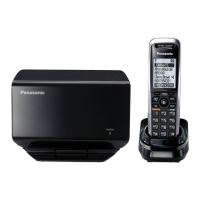


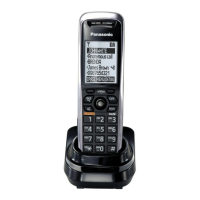
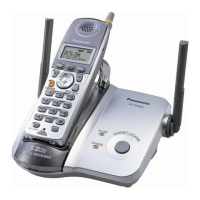
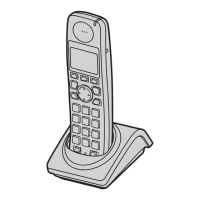
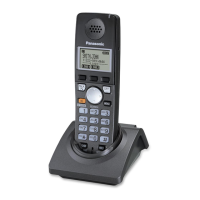
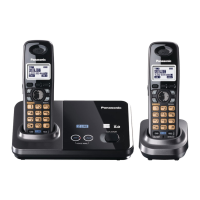
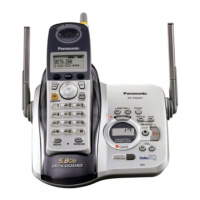
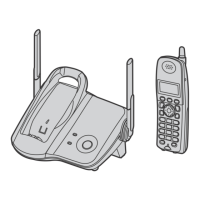
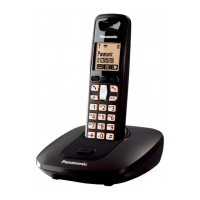
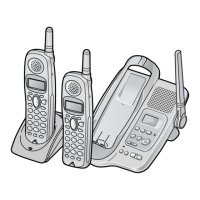
